Responding to emergencies and disasters is a tough job that requires both physical and psychological readiness. At times, however, the highly stressful nature of emergency response work stretches one’s capacity to cope, which results to negative psychological consequences such as posttraumatic stress symptoms and depression. Having support from co-workers, family, and friends helps responders cope. Or does it?
Helping comes at a price.
People working in emergency services face very stressful situations on a regular basis, which can exact a psychological toll on emergency responders. The New Zealand Medical Association recognises that in spite of the rewarding nature of their work, daily stressful events can wear doctors down (New Zealand Medical Association, n.d.). Compounding exposure to traumatic events is also shown to increase the risk for posttraumatic stress disorder (PTSD) in rescue workers (Berger et al., 2012). These effects may be long-lasting. For instance, a significant number of 9/11 police officers still experienced PTSD symptoms more than 10 years after the attacks (Cone et al., 2015).
For a long time, little attention has been given to the psychological effects of working in emergency response. Recently, however, news about doctor suicide (e.g., “Three of my colleagues have killed themselves. Medicine’s dark secret can’t go on,” 2017) and police and firefighter PTSD (e.g., Evans, 2017) have placed attention on the mental health concerns of people in high risk occupations, along with the inadequacies of measures in preventing these tragic outcomes. The problem is further complicated by some organisational cultures that consider help-seeking as a sign of weakness (e.g., Henderson, LeDuc, Couwels, & Hasselt, 2015)—something which is not valued in emergency response circles. Constant and cumulative exposure to horrible events and the reluctance to seek help is a recipe for psychological disaster.
Yet in spite of these conditions, some emergency responders survive and even thrive. This brings to light the fact that behind the highly stressful nature of the profession, working in emergency services can be very rewarding and can bring out the best in people. We now know that individuals—including emergency responders—can be resilient in the face of adversity (Bonanno, 2004, 2005; Bonanno, Brewin, Kaniasty, & La Greca, 2010) and we are now starting to identify these resilient factors. Studies on New Zealand police officers point to social support as one of these factors that decrease psychological distress and increase resilient outcomes (de Terte, Stephens, & Huddleston, 2014; Stephens, 1997).
There are ways of helping the helpers.
As a psychologist in the Philippines, I have had my share of providing psychological support to both survivors and responders in the aftermath of emergencies and disasters. In the course of my work, I had a troubling but unsurprising observation: there are usually no mental health services available for responders. They are usually left take care of themselves and/or take care of each other, perhaps because they are expected to be fine, or maybe because of the lack of resources, or both. Some responders get informal support from co-workers, friends, and family, to get through these very stressful times.
This illustrates the value of social support in emergency response. The highly stressful nature of responding to emergencies puts the responders at risk of a wide range of negative psychological effects. In addition, emergency response organisations usually lack the resources to help responders cope with these occupational hazards. Yet even with these difficulties, we find responders who, not only have lower psychological distress, but also experience personal growth. For some responders that I have talked to, having supportive relationships is an important component of staying afloat in their profession.
In fact, social support is found to be one of the most reliable factors that buffer the negative effects following a traumatic event. For instance, firefighters with high social support are found to have fewer suicidal thoughts compared to those with low social support (Carpenter et al., 2015). Emergency responders during the 9/11 attacks with high social support were found to have low levels of PTSD (Bromet et al., 2016). Social support is a major factor in psychological recovery after emergencies and disasters (Hobfoll et al., 2007).
Social support is but one of the many other ways of helping people working in emergency services. There are, however, several reasons why social support should be seriously considered as a form of intervention. First, social support occurs naturally. In the aftermath of emergencies and disasters, people rush to help others (Kaniasty & Norris, 2009). This includes helpers helping other helpers. Second, people who have better social support also have better psychological outcomes than those with poor social support. Third, social support is not necessarily contingent to traumatic exposure. Supportive relationships happen with or without horrible experiences, before and after catastrophic events. In other words, social support is both proactive and reactive—a protective factor and an intervention. Think of it as proper nutrition to prevent illness and to quickly recover from it.
There are ways of helping emergency responders. Social support has the potential of being one of the more effective and sustainable ways of doing so.
But it’s not as simple as it sounds.
Helping is simple. Effective helping is another story.
In my work as a psychological services provider and as a researcher, I have heard stories of how social relationships have helped emergency responders. I have also heard of how some relationships brought them down. In fact, one does not need to be in this kind of job to realise this. Think of a time when somebody helped you and you ended up feeling worse. Even with the best of intentions, supportive behaviours may not be effective, and may even cause harm, if not done properly.
Not all supportive behaviours and interactions end up supporting the people they intend to help. This is because social support has different facets (see Kaniasty & Norris, 2009), with each facet having a unique contribution to psychological outcomes. Receiving actual support is one of these facets. The receipt of actual support influences the perception of availability and quality of support, which is another facet. The third facet is being part of a community which may be able to provide support in times of need.
Social support also comes in different forms. It may come in the form of information, such as giving advice. It may be in the form of providing emotional warmth, such as giving words of encouragement. It may also be in the form of practical support, such as helping with certain tasks. It could range from providing a listening ear to lending money, or by just being there. These different forms of support have different effects. These effects depend on whether the support matches the need (Lakey & Cohen, 2000).
What, then, are the forms of support that match the needs of emergency responders?
The complexity of social support does not end there. The effectiveness of social support may also depend on who provides the support. For instance, family members can be very effective in providing support to emergency responders; however, some responders report being reluctant to share their experiences with family members, as they do not wish to expose them to the gruesome elements of their profession. People in the workplace are in a very good position to empathise and provide emotional and practical support, but some organisational cultures do not facilitate support-seeking behaviours. In fact, seeking for help, particularly in the mental health aspect, may even present itself as an occupational liability.
Who, then, can provide effective support for emergency responders?
The use of social support is also observed to vary across cultures. Some researchers observed European Americans to use social support more than Asians and Asian Americans as a way of coping (Taylor et al., 2004). European Americans were also observed to prefer emotional forms of support while Asians seem to go for informational types of support (Chen, Kim, Mojaverian, & Morling, 2012). There are not many studies comparing how social support works across different cultures, but there seems to be a pattern among collectivistic and individualistic culture orientations. For example, collectivistic societies, such as those in Asia, are characterised by a close-knit social structure that values relationship harmony. This is both good news and bad news. The good news is that the tight social structure allows for the provision of support even before one asks for it. This also happens to be part of the bad news. Some unsolicited forms of support may cause more distress. The other bad news is that because social harmony and order is held with high regard, people in collectivistic societies may be reluctant to ask for help as help-seeking may be viewed as inconveniencing other people. Receiving support may also be associated with outcomes other than relief. In the Philippines, for examples, receiving help from others may result to utang na loob (a deep form of indebtedness associated with one’s sense of being), which arguably may lead to strengthening of interpersonal relationships or psychological distress.
Will these cultural differences come into play in emergency response work?
We should study how to help properly.
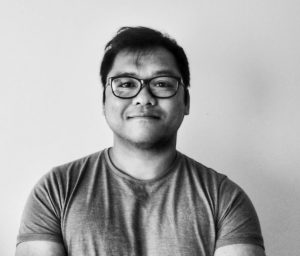 One thing is clear: social support is effective but its effectiveness is not absolute. It depends on several conditions, such as the type of support provided, the person providing the support, and who receives the support. We need to find out what conditions work best for emergency responders. This is where my current research comes in.
One thing is clear: social support is effective but its effectiveness is not absolute. It depends on several conditions, such as the type of support provided, the person providing the support, and who receives the support. We need to find out what conditions work best for emergency responders. This is where my current research comes in.
We already know that perceptions of social support are beneficial for emergency responders. The problem with a lot of social support research is that they do not move past studying perceptions of support. From the perspective of someone who provides psychological services, these are missed opportunities for knowing how to best utilise social support in order to effect psychological change.
Knowing what forms of actual support are effective and what forms are ineffective in reducing psychological distress and increasing psychological adjustment and personal growth is crucial. By knowing the elements of support that work and those that do not, we will be able to design programs and other interventions that focus on these effective supportive elements. This is especially important in emergency and disaster response. Emergencies and disasters usually challenge resources, and with limited resource, knowing which elements of support work will aid in prioritising efforts where it matters most.
Social support may be effective and highly sustainable, but it is not an infinite resource. Research has illustrated that in fact, social support deteriorates, especially after disasters. Knowing the effective elements of social support means being able optimise its effectiveness by increasing provision of supportive elements that works and decreasing those that don’t.
Finding out the best way to help emergency responders is complex, but the reason behind it is simple: we need help our emergency responders the best way possible so that they may be able to help us the best way possible.
—
My research is still on-going. If you are an emergency services worker, such as a police officer, military personnel, firefighter, ambulance driver, EMT/paramedic, physician, nurse, emergency/disaster worker, search and rescue worker, or an allied professional in New Zealand or in the Philippines, you could support this research by clicking the link and answering the questionnaire.
If you think you need help, do not hesitate to contact these hotlines:
Lifeline (New Zealand): 0800 543 354
Hope Line (Philippines): (02) 804-HOPE (4673)
References
Berger, W., Coutinho, E. S. F., Figueira, I., Marques-Portella, C., Luz, M. P., Neylan, T. C., … Mendlowicz, M. V. (2012). Rescuers at risk: A systematic review and meta-regression analysis of the worldwide current prevalence and correlates of PTSD in rescue workers. Social Psychiatry and Psychiatric Epidemiology, 47(6), 1001–1011. http://doi.org/10.1007/s00127-011-0408-2
Bonanno, G. A. (2004). Loss, trauma, and human resilience: Have we undersestimated the human capacity to thrive after extremely adverse events? American Psychologist, 59(1), 20–28. http://doi.org/10.1037/0003-066X.59.1.20
Bonanno, G. A. (2005). Resilience in the face of loss and potential trauma. Current Directions in Psychological Science, 14(3), 135–138. http://doi.org/10.1111/j.0963-7214.2005.00347.x
Bonanno, G. A., Brewin, C. R., Kaniasty, K., & La Greca, A. M. (2010). Weighing the costs of disaster : Consequences , risks , and resilience in individuals , families , and communities. Psychological Science in the Public Interest, 11(1), 1–49. http://doi.org/0.1177/1529100610387086
Bromet, E. J., Hobbs, M. J., Clouston, S. A. P., Gonzalez, A., Kotov, R., & Luft, B. J. (2016). DSM-IV post-traumatic stress disorder among World Trade Center responders 11-13 years after the disaster of 11 September 2001 (9/11). Psychological Medicine, 46(4), 771–783. http://doi.org/10.1017/S0033291715002184
Carpenter, G. S. J., Carpenter, T. P., Kimbrel, N. A., Flynn, E. J., Pennington, M. L., Cammarata, C., … Gulliver, S. B. (2015). Social support, stress, and suicidal ideation in professional firefighters. American Journal of Health Behavior, 39(2), 191–196.
Chen, J. M., Kim, H. S., Mojaverian, T., & Morling, B. (2012). Culture and Social Support Provision: Who Gives What and Why. Personality and Social Psychology Bulletin, 38(1), 3–13. http://doi.org/10.1177/0146167211427309
Cone, J. E., Li, J., Kornblith, E., Gocheva, V., Stellman, S. D., Shaikh, A., … Bowler, R. M. (2015). Chronic probable PTSD in police responders in the world trade center health registry ten to eleven years after 9/11. American Journal of Industrial Medicine, 58, 483–493. http://doi.org/10.1002/ajim.22446
de Terte, I., Stephens, C., & Huddleston, L. (2014). The development of a three part model of psychological resilience. Stress and Health, 30(5), 416–424. http://doi.org/10.1002/smi.2625
Evans, M. (2017). Emergency service workers suffering post-traumatic stress following terror attacks and Grenfell fire. Telegraph. Retrieved from http://www.telegraph.co.uk/news/2017/07/23/emergency-service-workers-suffering-post-traumatic-stress-following/
Henderson, S., LeDuc, T. J., Couwels, J., & Hasselt, V. B. Van. (2015). Firefighter suicide: The need to examine cultural change. Retrieved from http://www.fireengineering.com/articles/print/volume-168/issue-12/features/firefighter-suicide-the-need-to-examine-cultural-change.html
Hobfoll, S. E., Watson, P., Bell, C. C., Bryant, R. A., Brymer, M. J., Friedman, M. J., … Ursano, R. J. (2007). Five essential elements of immediate and mid-term mass trauma intervention: empirical evidence. Psychiatry, 70(4), 283-315-369. http://doi.org/10.1521/psyc.2007.70.4.283
Kaniasty, K., & Norris, F. H. (2009). Distinctions that matter: Received social support, perceived social support, and social embeddedness after disasters. In Y. Neria, S. Galea, & F. H. Norris (Eds.), Mental health and disasters (pp. 175–200). New York: Cambridge University Press.
Lakey, B., & Cohen, S. (2000). Social support theory and measurement. In S. Cohen, L. G. Underwood, & B. H. Gottlieb (Eds.), Social Support Measurement and Intervention: A Guide for Health and Social Scientists (pp. 29–52). New York: Oxford University Press.
New Zealand Medical Association. (n.d.). Health and wellbeing. Retrieved from https://www.nzma.org.nz/about-nzma/nzma-structure-and-representatives/councils/dit-council/health-and-wellbeing
Stephens, C. (1997). Debriefing, social support and PTSD in the New Zealand police: Testing a multidimensional model of organisational traumatic stress. Australasian Journal of Disaster and Trauma Studies, 1997(1).
Taylor, S. E., Sherman, D. K., Kim, H. S., Jarcho, J., Takagi, K., & Dunagan, M. S. (2004). Culture and social support: who seeks it and why? Journal of Personality and Social Psychology, 87(3), 354–362. http://doi.org/10.1037/0022-3514.87.3.354
Three of my colleagues have killed themselves. Medicine’s dark secret can’t go on. (2017). Stuff. Retrieved from http://www.stuff.co.nz/world/australia/89276565/three-of-my-colleagues-have-killed-themselves-medicines-dark-secret-cant-go-on
John Guilaran is a PhD candidate in Psychology. His research attempts to unpack the effectiveness of social support and interpersonal relationships in emergency responders. This post was originally published in the author’s personal website (http://JohnGuilaran.com).
 Co-Facilitator Position for Hire
Co-Facilitator Position for Hire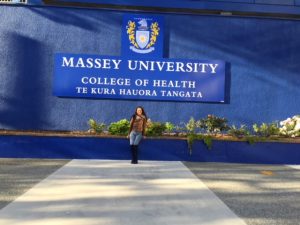 Christie Satti, MPH is a doctorate research student in the school of public health and school of people, planning and environment. Her doctorate research is an exploration of how diversity can inform evaluation practice, informed by two methodological approaches to sensemaking, Q methodology and sensegiving.
Christie Satti, MPH is a doctorate research student in the school of public health and school of people, planning and environment. Her doctorate research is an exploration of how diversity can inform evaluation practice, informed by two methodological approaches to sensemaking, Q methodology and sensegiving. 
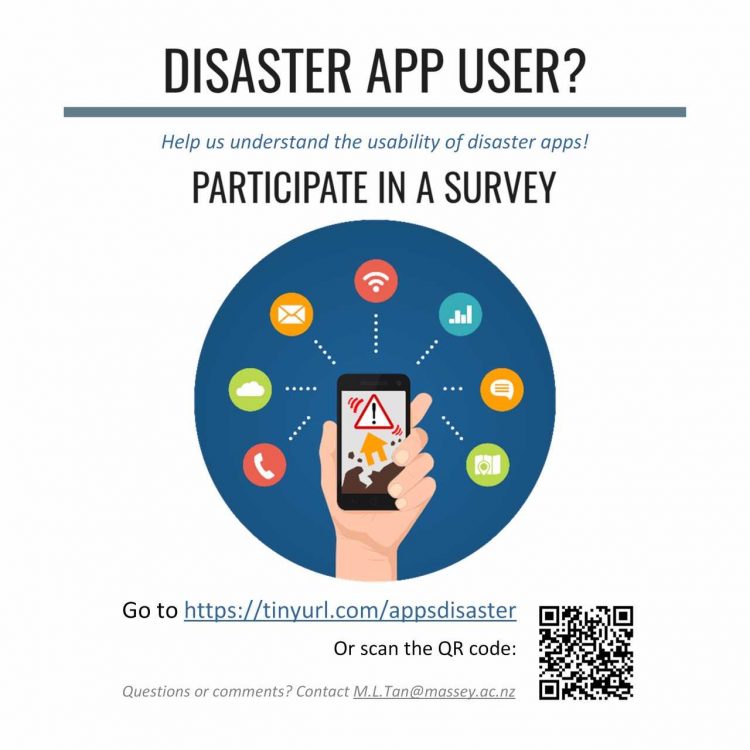 2 minutes after midnight on the 14th of November 2016, I experienced the largest earthquake in my life. A 7.8M earthquake struck near Kaikoura that caused severe shaking throughout New Zealand
2 minutes after midnight on the 14th of November 2016, I experienced the largest earthquake in my life. A 7.8M earthquake struck near Kaikoura that caused severe shaking throughout New Zealand Marion Tan is a PhD candidate at the Joint Centre for Disaster Research at Massey University. She is interested in users’ interaction with technologies during disaster situations. Her research looks into evaluating usability of mobile applications for disasters.
Marion Tan is a PhD candidate at the Joint Centre for Disaster Research at Massey University. She is interested in users’ interaction with technologies during disaster situations. Her research looks into evaluating usability of mobile applications for disasters. One thing is clear: social support is effective but its effectiveness is not absolute. It depends on several conditions, such as the type of support provided, the person providing the support, and who receives the support. We need to find out what conditions work best for emergency responders. This is where my current research comes in.
One thing is clear: social support is effective but its effectiveness is not absolute. It depends on several conditions, such as the type of support provided, the person providing the support, and who receives the support. We need to find out what conditions work best for emergency responders. This is where my current research comes in.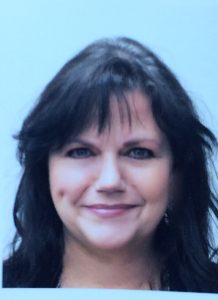 Research can be a solitary pursuit. Even when the data collection involves interviews and focus groups, the project stages prior to and after collection are most often the results of many long hours of reading and writing in your own world. This much “me” time can be good for focus and clarity, but can also be bad. Whether you’re a PhD student, or working professional, or both, balance is everything.
Research can be a solitary pursuit. Even when the data collection involves interviews and focus groups, the project stages prior to and after collection are most often the results of many long hours of reading and writing in your own world. This much “me” time can be good for focus and clarity, but can also be bad. Whether you’re a PhD student, or working professional, or both, balance is everything.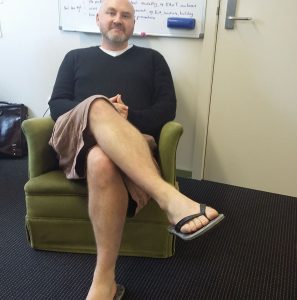 My thoughts on the mental health of doctoral students
My thoughts on the mental health of doctoral students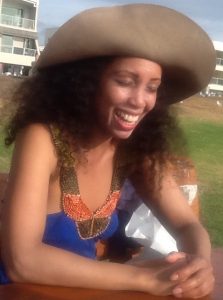 Lead with your best.
Lead with your best.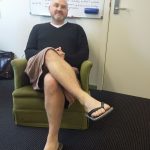 of diversity fits wells within my discipline of social science (psychology) where the diversity of how people think is integral for making a difference. I am studying how disaster risk is perceived, communicated and acted upon in local government and given this environment, diversity is very important both as a complicating factor, but also as a means for achieving robust decision making and action. The main problem with interacting with diversity of thinking and perspectives for my research is the difference in discourse between scientists, practitioners and policy makers, especially when communicating the subject of disaster risk management where terminologies, perceptions and understandings contrast depending on social, economic, political and cultural factors. Science is seen as ‘Certified’ and ‘Expert’, with scientists seen as external advisors without an understanding of the time frames and policy restrictions for practitioners. On the other hand, the practitioners are often seen as ‘Laypeople’ and ‘Unqualified’, that don’t understand, or don’t have the flexibility to give effect to the finer points of the science information provided. Given this environment, trust between the diverse participants is low and turning science into policy is very difficult.
of diversity fits wells within my discipline of social science (psychology) where the diversity of how people think is integral for making a difference. I am studying how disaster risk is perceived, communicated and acted upon in local government and given this environment, diversity is very important both as a complicating factor, but also as a means for achieving robust decision making and action. The main problem with interacting with diversity of thinking and perspectives for my research is the difference in discourse between scientists, practitioners and policy makers, especially when communicating the subject of disaster risk management where terminologies, perceptions and understandings contrast depending on social, economic, political and cultural factors. Science is seen as ‘Certified’ and ‘Expert’, with scientists seen as external advisors without an understanding of the time frames and policy restrictions for practitioners. On the other hand, the practitioners are often seen as ‘Laypeople’ and ‘Unqualified’, that don’t understand, or don’t have the flexibility to give effect to the finer points of the science information provided. Given this environment, trust between the diverse participants is low and turning science into policy is very difficult.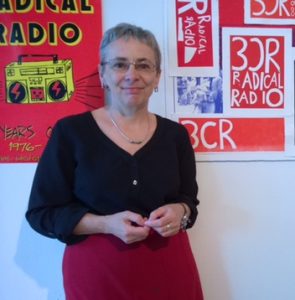 Diversity, literally and figuratively, means a range of different things. We all experience diversity in different ways at different times.
Diversity, literally and figuratively, means a range of different things. We all experience diversity in different ways at different times.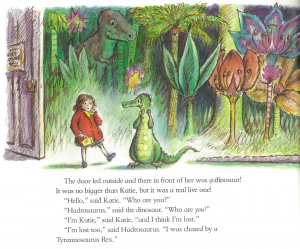
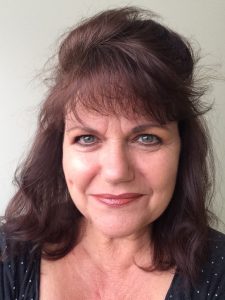 ome a buzz word, used in policy and decision-making in private and public organisations, schools, churches, and even military recruitment. The need to provide a welcome and positive environment to expand the diversity of those involved in these institutions is discussed, supported and even mandated in many cases. While some organisations fall short of the mark, many are working to give increased diversity the best possible environment to grow. Offering special facilities for prayer, gender sensitive toilets, pledges, and broader menus to include dietary restrictions are all part of organisations efforts to improve their diversity- and once improved provide an environment of acceptance for their diverse group. The question is, why? Why do we seek to diversify our groups, embrace outliers, and welcome those from different social groups? Why do we care about diversity?
ome a buzz word, used in policy and decision-making in private and public organisations, schools, churches, and even military recruitment. The need to provide a welcome and positive environment to expand the diversity of those involved in these institutions is discussed, supported and even mandated in many cases. While some organisations fall short of the mark, many are working to give increased diversity the best possible environment to grow. Offering special facilities for prayer, gender sensitive toilets, pledges, and broader menus to include dietary restrictions are all part of organisations efforts to improve their diversity- and once improved provide an environment of acceptance for their diverse group. The question is, why? Why do we seek to diversify our groups, embrace outliers, and welcome those from different social groups? Why do we care about diversity?